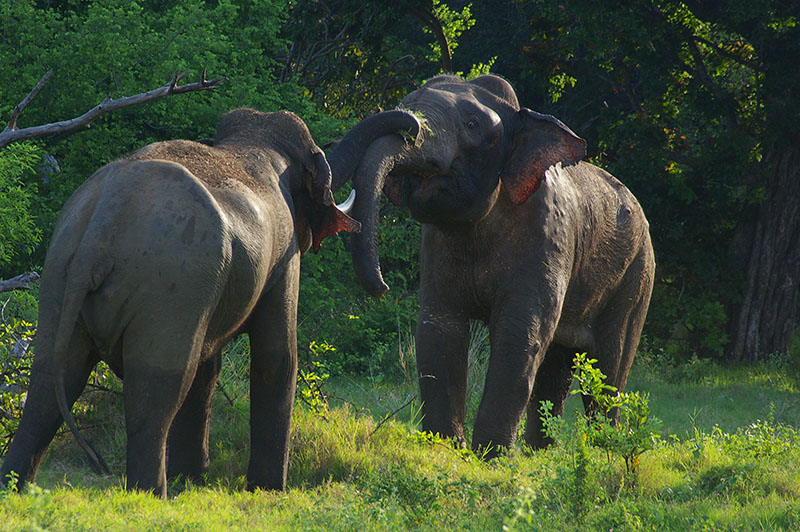Elephant Watching Tour
Elephant watching Tour
12 Days/ 11 Nights
All our tours are tailor made tour. We can customize this tour in Sri Lanka to suit your requirements. You can decide where do you want to go and how many days stay in Sri Lanka. As you wish, if you mention the names of the hotels you want to stay, we can reserve it for you.
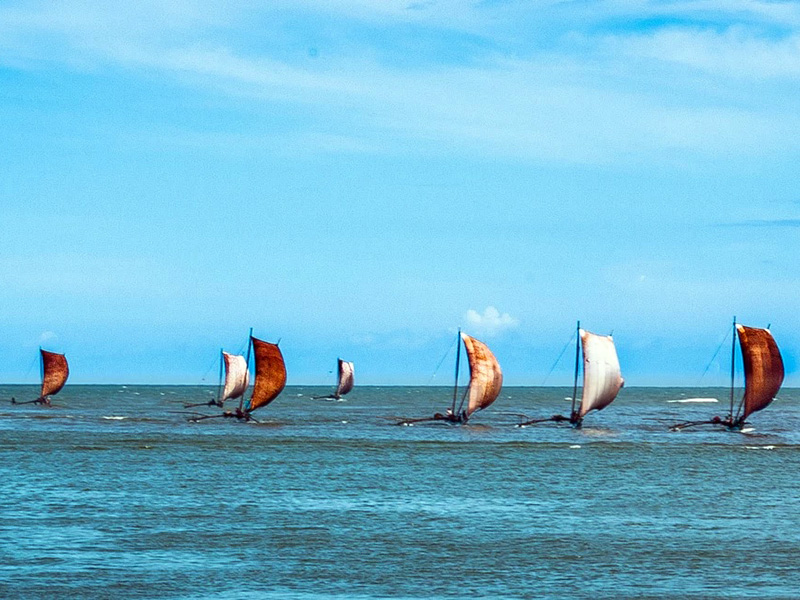
On arrival at the Bandaranaike International Airport, you will get your first taste of warm Sri Lankan hospitality; Representative from Aliyah Tours will Welcome you and transfer to Negombo.
Check-in to the hotel and relax.
Overnight stay in Negombo.

Dambulla rock temple has been built in the 1st century B.C. and it is a world heritage site. Also, it is the most impressive of Sri Lanka’s cave temples. Hewn into a 160m granite outcrop are the remarkable cave temples of Dambulla. Located at the centre of the Island and on the main route north to Anuradhapura and Polonnaruwa, the cave temples are masterpieces of Buddhist art. Each is filled with murals depicting scenes from the Buddha’s life, and gilded statues of the Buddha in various poses. In the 1st c, BC, the Dambulla caves provided refuge to a king who fled a south Indian invasion. On reclaiming his throne, the grateful king had temples constructed in the caves that had sheltered him. These were embellished by subsequent rulers, especially during the Kandyan period in the 17th and 18th centuries. Altogether, there are five caves. A cave 2, the Maharaja Vihara is the largest and most spectacular at over 50m long, 7m high and almost 25m deep. The spiritual energy at Dambulla is palpable and the Buddhist art on display is unparalleled in Sri Lanka. An added bonus is the majestic view from the top of the rock. The complex of five caves with over 2000 sq. meters of painted walls and ceilings is the largest area of paintings found in the world. It contains over 150 images of the Buddha of which the largest is the colossal figure of the Buddha carved out of rock and spanning 14 meters.
After breakfast you will transfer to Dambulla.
On router you will visit Pinnawala Elephant Orphanage.
Those who want to see the tamed and a semi wild elephant in close proximity the best place is the “Pinnawala Elephant Orphanage”. It is located northwest of Kegalle town along the Colombo -Kandy main road. The orphanage is in a beautiful greenish land with fruitful twenty five acre coconut land and having grasses over the underground near Maha Oya. The wide area of shallow water and the huge rocks of Maha Oya make the ideal place to these magnificent animals. Elephant Orphanage was established in 16th February 1975 by the Department of Wild Life Conservation. At the beginning of orphanage there were only five orphan baby elephants those who brought from different places of the island. From the inceptions to date, Neela, Wijaya, Kadira, Mathali and Kumari are some of babies that were brought to the facility still living in the orphanage. Since then orphan elephants brought to the orphanage from different parts of the island and brought up at the orphanage. They were fed with milk as well as array of fodder.
Since 1983 the elephant orphanage has being governing by the Department of National Zoological Gardens. First captive birth of the orphanage had taken place on 05th July 1984. There are 78 elephants in orphanage now and there are 69 births in the orphanage and increase the number of elephants in the herd. Pinnawala Elephant orphanage is treated as one of the largest breading center in the world. Today the heard has grown up to 69 elephants. Among the many elephants of the orphanage there are three of them which will definitely get your attention.

Bullock Cart is the first vehicle in Sri Lanka, in the past once famous mode of transport of local royalty. Today this vehicle have become coordinating between the past and present. When you visit the great Sigiriya Rock, you can see a fortress that stands up in the wilderness. Where once upon a time, an aesthetic king built his hideaway to rule his kingdom, even today Sigiriya stands like a sentinel in the sky your experience begins the village called Ehelagala. It adjacent to the freat “Sigiriya Rock” you can ride the bullock cart in gravel path becomes the dust red soil of a bund. A line of black and makes its way across it, disappearing in to the grassy verge, flit between the a hive of activity butter files flit between the wild flowers, their wings coalescing and separating, in a kaleidoscope of colour. You can see many animals and birds; in the jungle. In the distance and the seemingly endless expanse of cool, cool green. Meander along the grassy bank of the picturesque Ehelagala for a truly satisfying birding experience. Reservoir is a stunning mixture of the village after the cart ride visitor can get a canoe boat ride in the reservoir. Then visitor can get experience of the pleasures of village life. Visit a poor house in the village. You can see a farmer going to his rice field with a hoe on his shoulder and his wife making the lunch to him. You can get enjoy the village tour and have a simple home cooked meal and village drink by journeying into the heart of Ehelagala. At the end visitor have a Tuk Tuk tour or Hand Tractor tour back to the starting point.
Breakfast at the hotel, transfer to Sigiriya.
Part hedonistic pleasure palace, part fortress and part sacred complex, Sigirya is one of the island’s most awe-inspiring archaeological sites and a leading tourist attraction. In fact some consider it to be one of the oldest tourist attractions in the world with early visitors recording their impressions as graffiti on a wall described as the world’s first interactive book. Located north of Dambulla, the site consists of a sheer rock that rises over 200m with the ruins of a palace on the top and a vast pleasure garden complex at the foot. For just two decades in the 5th c.AD, Sigiriya rose to prominence following a power struggle between two brothers, and an act of patricide that saw the then king walled-up alive by his son, Kasyapa. Fearful that his defeated brother would return from exile to extract vengeance, Kasyapa shifted the capital to Sigiriya.
The Megalomaniac yet spiritual Kasyapa clearly had an eye for beauty. The Pleasure gardens include a series of symmetric pools, channels and fountains that still spurt water after 1500 years. Partway up the rock are the famous Sigiriya Frescoes, featuring 21 bare-breasted damsels that may represent celestial nymphs, but were surely modeled on Kasyapa’s own consorts. Halfway you’ll encounter a pair of giant Lion’s Paws, part of the original entrance, which required visitors to pass through the open mount of the lion. The summit yields a dramatic vista of the surrounding jungle and contains the foundations of the palace complex, replete with bathing pool. But all this was to be in vain. Kasyapa descended from his palace in the clouds to face his brother astride an elephant, eventually taking his own life when facing certain defeat.
Elephant Ride in Sri Lanka is a very popular activity among the children and also one the favorites of the adults. The scenery Elephant Ride is not only a ride; it is a marvelous way to explore the Sri Lankan nature. You will get a chance to ride thought wildest regions and attractive riverside scenery if you are dreaming to have a ride with this intelligent mammal; this is the best chance you will ever get. While you are on round tour, don’t forget to enjoy the Elephant Ride as it will be a memorable activity witch you ever have. The best places for Elephant Rides are Sigiriya and it is a delightful experience as this riding path moves through lakes, villages and wildlife.
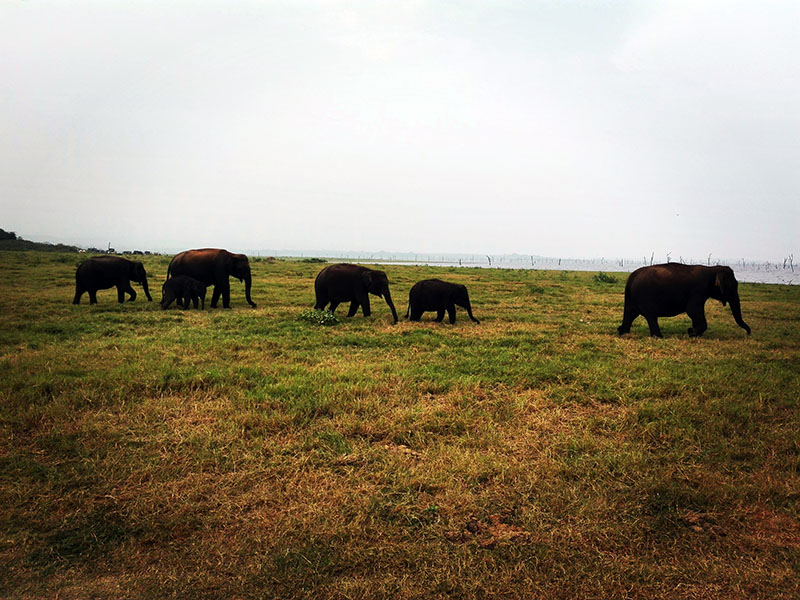
Sri Lanka, which is well-known for handicrafts, holds long olden times of craft heritage. According to “Mahawamsa” the prevailed arts and crafts were innovated with the arrival of Nun “Sanghamitta” to Sri Lanka from India. The history report that crafts men belong to sixty special castes arrived to Sri Lanka along with her on her visit that brought the Sacred Bo- Tree to Anuradhapura. With this heritage Sri Lanka got fame all over the world for its arts and crafts. If you visit ancient cities like Anuradgapura, Polonnaruwa, Sigiriya and Kandy you will wonder at the complicated designs of Sri Lankan craftsmen. The perfect stone carving of Samadhi Buddha statue, the stone Buddha statues at Anuarhapura: Awkana, Polonnaruwa Gal Vihara is exclusive in their carving. Still Polonnaruva have traditional carpenters who are engaged in wood carving. They create those age old master pieces. You can also wines a wood carving superstore where you will be shown all the types of timber and hardwood available
After breakfast you will proceed to Minneriya National Park at Polonnaruwa.
The area was designated as a national park on 12 August 1997, having been originally declared as a wildlife sanctuary in 1938. The reason for declaring the area as protected is to protect the catchment of Minneriya tank and the wildlife of the surrounding area. The tank is of historical importance, having been built by King Mahasen in third century AD. The park is a dry season feeding ground for the elephant population dwelling in forests of Matale, Polonnaruwa, and Trincomalee districts. The vegetation of the park consists of mixed evergreen tropical forests, abandoned oaks, grasslands and wetlands. Among the 24 species of mammals residing in the park are elephants, leopards, lazy bear, spotted deer, deer, wild ox, wild pig, gray leopard, purple leaf monkey, The three species of mongoose, the porcupine and the Indian pangolin. Minneriya National Park has registered more than 170 species of birds. Among the nine species of amphibians in Minneriya National Park are the endemic and threatened thin frog and the common frog. Of the 25-reptile species recorded in Park 8 are endemic, including the Red Lizard lizard. Water and soil monitors are also visible here. The Crocodile Mugger can be seen near the tank. Many freshwater fish species are found in the Minneriya reservoir.

After breakfast you will transfer to Ampara.
Check-in to the hotel and relax.
Overnight you stay in Ampara.

Wild elephants can be seen throughout the year and the highlight is seeing the elephants swim from island to island. In the middle of the lake, one can find the Birds’ Island, a nesting place for colonies of birds where exotic assortments of species jostle thickly for space. Bird’s Island,an island amidst the reservoir used by birds for nesting, especially the eagle species. The Sri Lankan axis deer, grey headed fish eagle and thousands of birds can be seen here. More than 150 bird species have been identified.
Things to Do: Wildlife, bird watching, photography, camping, archeology.
After breakfast you will transfer to Gal Oya National Park.
Arrive in Ampara and in the evening visit Gal oya National park where you will have the chance to witness Elephant Swimming. The Gal Oya National Park is surrounded by mighty mountains. It is a fascinating land, which you can take your time to discover. The Gal oya National Park is Sri Lanka’s most untouched national park which was established in 1954. The largest reservoir in Sri Lanka, the Senanayake Samudraya is encompassed by the Gal oya National Park. Gal Oya National Park has grown from its original 9324 hectares to nearly 63,000 hectares today giving sanctuary to much wildlife and winning a name as a big game sanctuary in the region. This is the only wild life park in Sri Lanka where safaris are undertaken by boat. Apart from the land route, the national park can also be accessed by boat, crossing the Senanayake Samudraya at Inginiyagala. It gives a rare opportunity for visitors to see wild animals drink water from the edge of the lake and forage along the shore.

After breakfast you will transfer to Mahiyanganaya to visit Vedda Community.
Dambana located 19km north east of Mahiyangana bordering the Maduru Oya Sanctuary is home to the indigenous “Vedda” community numbering close to 1000 individuals. Sri Lanka’s Aborigines’, or the Veddha’s meaning “people of the forest” of Sri Lanka has a history much older than prince Vijaya’s landing in 5th century BC and the origins of the Sinhala race. The natural habitat of these people, whose livelihood once depended solely on hunting, was confined to the forest. They are essentially hunter gatherer forest dwellers without much change in their life style from Stone Age to modern times. Veddha’s also collect bee’s honey and exchange it with the locals for axe hanging from their shoulders and a bow slung behind them.
The total extinction of their traditions of hunting for food, cooking in open fire with a group, collecting Bees Honey, their songs and dances has now become a rare possibility. Today, the Veddha’s are more modernized as far as at least the cloths are concerned and perfect way to observe Veddha is to organise a camp close to or within a reservation However during the recent decades, they have been shifting in a slow transformation into Chena dry land for cultivation. An ideal place to observe Veddha is their last remaining village of Dambana. Veddha’s will be more than happy to show you their ways of life, with an axe hanging from their shoulders and a bow slung behind them, gives you the feeling nothing much has changed since the dawn of time for these proud warriors of the jungle.

Nestled in lush green hills and built around a scenic lake, the Royal City of Kandy, at 500m above sea level, is the hub of any visit to the hill country. Kandy, a UNESCO World heritage Site, was the last bastion of resistance to colonial rule, surviving two centuries of colonial incursions by the Portuguese and the Dutch before falling to the British in 1815. Even today, Kandyans pride themselves on their distinctive architecture, music, dance and art. The showpiece of the city is the Dalada Maligawa or Temple of the Tooth Palace, which hosts the Lord Buddha’s tooth relic, an item of veneraltion to all Buddhists, is an experience no tourist should miss. Said to have been snatched from the Lord Buddha’s funeral pyre and smuggled to Sri Lanka in the hair or a princess, the tooth relic is of great spiritual significance. Strolling around the lake or exploring the numerous temples that dot the hills nearby is a great way to get the feel of this historic city. Each Year, in August, the city holds the Esala Perahera (procession), a spectacular display of medieval Pageantry replete with caparisoned elephants, whirling fire dancers, and pulsating drummers.
Visit Bazaar area, Arts & crafts centre, a Gem museum and a lapidary etc.
In the evening visit Temple of the Tooth Relic. Late evening witness the Cultural Show, experiencing the pulsating drum rhythms and colorful traditional dances at a cultural show is another must.
After breakfast you will transfer to Kandy.
On route we will visit Mahiyanganaya Temple. As well as on route you can visit Gem museum & silk garden (optional).
This town is dominated by Buddhists. It is believed that Lord Buddha’s first visit to Sri Lanka was to this city and an ancient Buddhist Temple named Mahiyangana Maha Viharaya was built on this site by the rulers at that time. The Mahaweli river flows through this city and majority of people in this area are paddy farmers which is also the main activity that provides economy.
Gems & Jewelry Museum – Sri Lanka is world famous for its valuable & semi-precious Gems. Specially Sri Lankan Blue Sapphire. It is very exclusive & owns a huge reputation in the world. Clients could visit a Gemological Museum, a gem cutting factory & also can witness a documentary on Gem mining & the process. Later you can shop for Gems, Jewelry & Other ornaments. Don’t forget to collect your authenticity certificate for gems.
Silk Garden – Visit the Silk Garden. Clients will be shown the process of making silk & how the handloom sarees are been made in Sri Lanka.The ladies will be given a chance to wear a traditional Sri Lankn saree & it be an ultimate opportunity to experience the Sri Lankan dressing culture. You can shop for Silk items, sarees, sarongs, shirts & many other gorgeous materials according to your choice.

After breakfast you will transfer to Millennium Elephant Foundation.
“Spend time with an Elephant”. You will be walking along with an Elephant and will be given information about the foundation and elephants. And then you will get the chance of bathing the same Elephant in the river and also you can visit the Elephant Dung paper factory nearby.
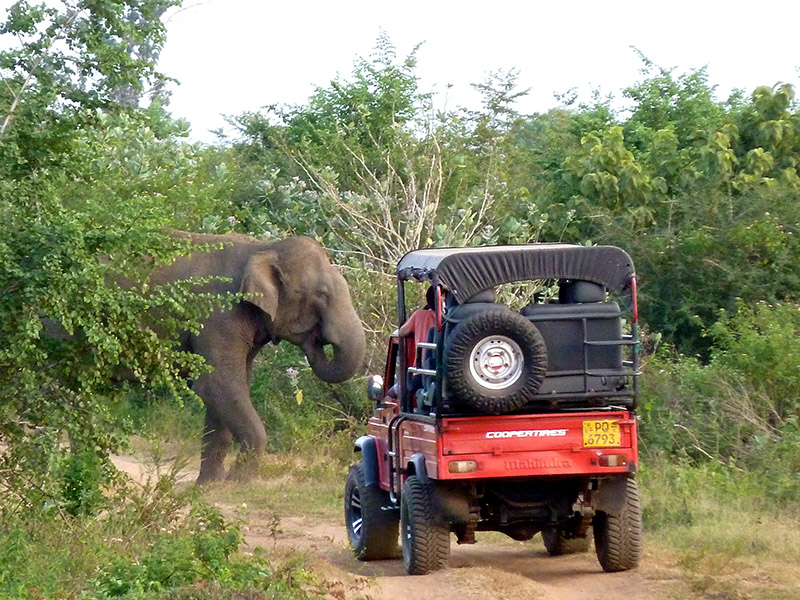
After breakfast you will transfer to Udawalawa.
On route you will visit Ravana Water Fall.
The 25m-high Ravana Falls cascades from an oval-shaped concave rock outcrop. Kirinidi Oya is the water course for this beautiful cascading waterfall. It currently ranks as one of the widest falls in the country. This waterfall measures approximately 25 m (82 ft) in high and cascade from an oval-shaped concave rock outcrop. During the dry season water level reduces drastically and Ravana falls becomes very skinny, but again becomes majestic during the upstream rainy seasons. In the dry season, the flow of water is markedly reduced, whereas rain turns the fall into what is said to resemble an area flower with withering petals. But this is not the case in the wet season, where the flow of water reduces dramatically. The falls have been named after the legendary character Ravana, which is connected to the famous Indian epic, the Ramayana. According to story, it is said that Ravana (who was the king of Sri Lanka at the time) had kidnapped princess Sita, and had hidden her in the caves behind this waterfall, now simply known as the Ravana Ella Cave. At the time, the cave was surrounded with thick forests in the midst of wilderness. It is also believed that Rama’s queen bathed in a pool that accumulated the water falling from this waterfall. Locals who are traveling to upcountry used to stop by the Ella and get shower at here, so you can stay, relax and refresh and continue your journey.
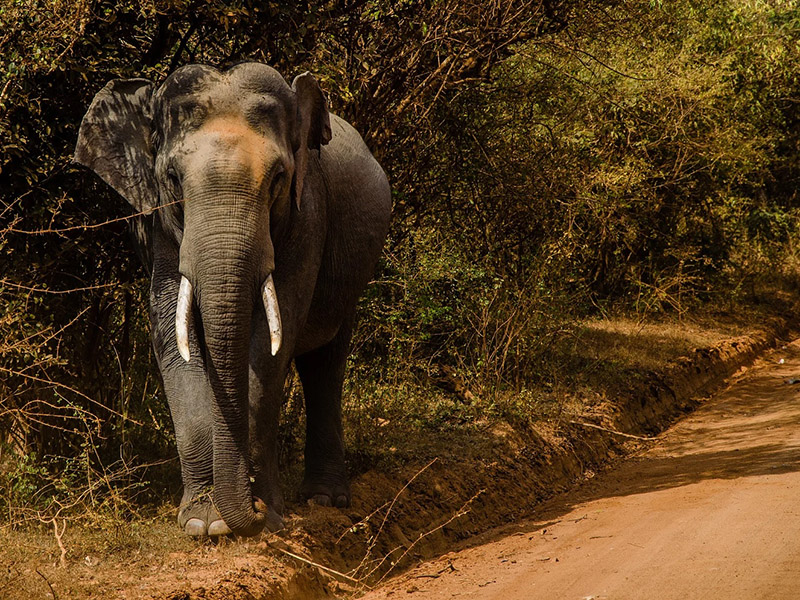
After breakfast you will transfer to Udawalawa national park.
Udawalawe is undoubtedly the best place in Sri Lanka to see wild Asian Elephants throughout the year: there are about 500 elephants in the park and they often roam in herds of up to 100. It is an ideal place to see elephants in large numbers. Udawalawe National Park is unique in terms of consistency in numbers of elephants roaming the park: it has no a seasonal variation in herds of elephants. The best hours to visit the park are in the mornings and evenings. Late evening also affords the photographic opportunities in the backdrop of loveliest sunsets. Udawalawe has rich biodiversity. Udawalawe is one of the best places for watching birds where species including Black-winged Kite, Asian Openbill, Black-capped Kingfisher, Crested Serpent Eagle, Changeable Hawk Eagle, Grey-headed Fishing Eagle and Brown Fish Owl can be seen. National Park is an awe-inspiring site from which to experience Sri Lanka’s wilderness and unique wildlife. Along the border of Udawalawe reservoir, the park extends over 30,000 hectares with almost unparalleled diversity and a sheer number of animals.Udawalawe is a habitat for an abundance of exalting animals including sloth bears, sambar deer, wild boar and junglefowl. Count on your luck for you could even spot reclusive leopards strutting around the scrublands or hidden by foliage on trees.
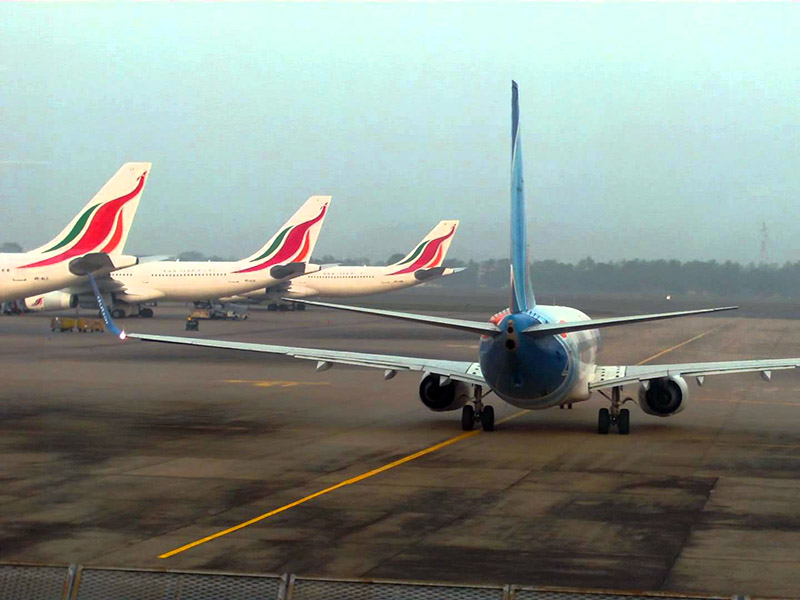
After breakfast you will do city tour of Colombo.
Colombo is the commercial and business center of Sri Lanka located on west coast. The city blends together with old colonial type building, high-rise commercial buildings and hotels. It is filled with shopping malls. Some of the finest structures built during the colonial times still preserved in one part of the City. For example, there is a 100-year-old clock tower, and the Bandaranaike Memorial International Conference Hall (BMICH) which was a gift to Sri Lanka from the People’s Republic of China.
Welcome the guests at the Airport by a Representative of Aliyah Tours
All Local Transfers and Sightseeing by an air-conditioned vehicle throughout the tour
Entrance Fees for Sights Visited
Visit according to the program
One litter water bottle per day
Highway Tolls
All Local Taxes
Air tickets and insurance
Immunizations / Medical
Meals and accommodation
Video camera permits
Vehicle use for night life activities
Porter rage & Tips
Cost of beverage throughout the tour
Expenses of a personal nature
Any other services not specified above
Client should pay 50% of tour amount at the arrival and the rest can be paid during the tour or at the Airport where you’re ready for the departure.
You should provide accommodation and meals for the driver.
Cancellations within 01 to 06 days of the arrival date – 100% of the value of the booking
Cancellations within 07 to 13 days of the arrival date – 50% of the value of the booking
Cancellations within 14 to 28 days of the arrival date – 25% of the value of the booking
Cancellations beyond 30 days of the arrival date – not charge

